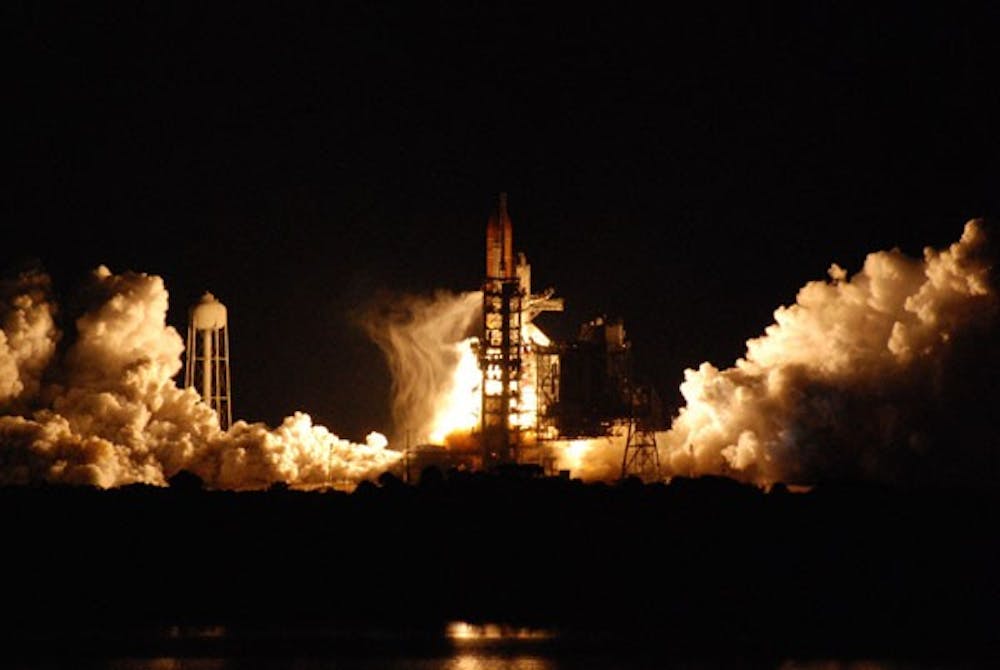A NASA space shuttle launched Tuesday morning carrying a one-of-a-kind experiment that may help ASU researchers find new ways to treat infectious diseases.
ASU School of Life Sciences associate professor and Biodesign Institute researcher Cheryl Nickerson and her team sent the first-ever human cells infected with a microbial pathogen into space.
The actual inoculation will occur in space, near the end of the space shuttle’s 13-day flight.
“We’re interested in understanding new ways that microbial pathogens, or germs, cause disease in the human body by increasing our understanding of the infection process,” she said. “So far, we’ve been able to uncover new ways these pathogens are causing disease — ways we’ve not been able to find on Earth in a lab.”
On Earth, gravity can “mask” certain processes involved in causing infection — preventing researchers from studying these pathways and developing drugs that could prevent disease in new ways, Nickerson said.
“We need to care about this because there’s a lot of infectious diseases that we don’t have cures for, or vaccines for, or treatments for,” she said. “The only way to get to these applications is to understand how the pathogen is infecting the body. Each time we find a new way it is causing disease, we can use it to move toward new treatments.”
Through previous experiments in space, Nickerson’s team has demonstrated certain bacteria, like Salmonella, become stronger pathogens following exposure to the lack of gravity, or microgravity, in space.
The decrease in gravity isn’t causing the bacteria to act differently, however, meaning the research will potentially benefit the general public, she said.
“The environment of space flight … is directly relative to conditions in the body,” Nickerson said. “The bacteria are not doing something new in flight; they are doing something they have always been able to do, but we haven’t been able to observe.”
This flight will run two experiments — the first is to inoculate human intestine cells with Salmonella to study how the bacteria infect the human cells.
The second experiment will culture pathogen-free human intestine and lung cells to discover how they react to the microgravity environment without being infected, to provide Nickerson’s team with a control group to compare against the infected cells.
The entire process is automated, so the astronauts aren’t required to have an in-depth understanding of the science behind the experiment, said Kevin Sato, a project scientist at NASA’s Ames Research Center.
The shuttle launched Tuesday from NASA’s Kennedy Space Center in Florida after weeks of coordination between Nickerson’s team, NASA’s flight team, the hardware provider and the integration team, Sato said.
Once the shuttle lands on April 18, the incubators containing the cell cultures will be transported back to ASU’s Biodesign Institute for Nickerson’s team to study.
Post-doctoral researchers and experiment preparation leaders Jennifer Barrila and Shameema Sarker will travel to Orlando to meet Nickerson and bring the samples home, Sarker said.
Sarker said she is confident the experiment will provide valuable information.
“Participating [in this project] was an amazing experience and I’m pretty sure we will get some really exciting data,” she said. “We are all looking forward to doing the analysis and publishing the results.”
Barilla and Sarker also attended the space shuttle launch in Orlando.
“It’s all very, very exciting. It was such an adrenaline rush seeing the launch,” Sarker said. “I’m still going through that phase of being excited, and it’s going to take a while to get past that. I can’t describe to you the feelings inside me right now.”
Reach the reporter at keshoult@asu.edu





